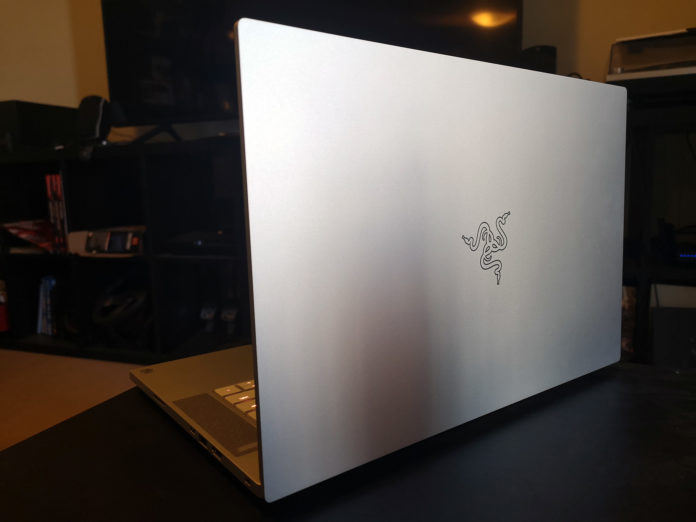We’re seeing a continual evolution of computing and connected hardware. Now in our increasingly online world, mobile hardware is becoming more important to us as is entertainment. Razer and Republic of Gamers (ROG) are at the forefront of gaming developments and both have recently released new gaming laptops:
Razer Blade 15 Advanced
Razer is recognised for delivering premium products at a premium price and the Blade 15 Advanced continues that trend. It carries the latest and greatest of hardware, an uncompromising suite of connectivity and really looks the part.
The spec sheet includes 11th Gen Intel® Core™ H-Series Processor — model-dependent — up to an Intel Core i9 with an NVIDIA® GeForce RTX™ 30-Series Laptop GPU. For many, this is a mobile device, significantly more powerful than desktop machines less than 12 months old. With the processing and graphic capabilities of the laptop are complemented by DDR4 3200MHz memory and a blazingly fast display, capable of up to 360Hz refresh rate.
Connectivity on the Blade 15 Advanced includes:
- Thunderbolt™ 4 and USB-C
- Full-sized SD card reader and HDMI port
- Wi-Fi 6E, Bluetooth and a Full HD 1080p camera
- Narrow form factor starting — model-dependent — at 15.8mm
The fly in the ointment here is the AU$4,299.00 asking price.
ROG Zephyrus M16
One of a couple of recent ROG releases and possibly the most attractive form factor for mobile users. It sports the form factor a 15″ laptop with a 16″ screen due to the impressively narrow (4.6mm bezels on all four sides) delivering a 16” 16:10 panel to users. In true ROG fashion, the M16 has some specs that immediately position the device at the pointy end of the field with an 11th Generation Core™ i9-11900H processor and NVIDIA® GeForce RTX™ Laptop 3070 GPU.
For the performance picky buyers, this beast can be upgraded to as much as 48GB of DDR4 3200 memory.
The relatively slim — given the capabilities of the laptop — design (19.9mm) and weight of the device coming in at under 2kg means it’s not something you’d lug around every day, but it’s going to be a mighty companion with the 90Wh battery giving 10 hours of use.
The Dolby Atmos® surround sound will bring an immersive experience to your mobile life, with a multi-mic setup capturing clear audio for your online comrades and if that’s not enough, the connectivity is impressive. This includes a Thunderbolt 4 port for video playback or media access, USB-C and USB-A ports, Wi-Fi 6, Ethernet and a MicroSD card reader.
We’re expecting pricing and official availability in June, we’re also expecting that price to be big.
ROG Zephyrus S17
The S17 is the bigger brother to the M16, and by big we mean big: It should probably be considered as a desktop replacement than a mobile computing option. Sporting the same high-end CPU and an upgraded 3080 graphics option over the M16, the S17 is an absolute monster.
The 17″ display brings QHD at 165Hz or 4K 120Hz with Adaptive-Sync to users, making not just gaming but any long period in front of the screen easier on your eyes. The speaker setup, powered by smart Amps and Dolby Atmos adds to that high-end experience you’ll have.
What interests us with the S17 is the rising, mechanical keyboard that users will enjoy. While it likely won’t have the same feeling as a desktop mechanical keyboard, it could significantly improve the overall experience for laptop users. The keyboard rises as part of the laptop hinge mechanism that opens the laptop for better cooling at the keyboard is raised to a comfortable typing angle
When we said it’s a monster, we meant it: a 2.6 kg monster that (by the time you add the charging brick) is going to be quite cumbersome to carry daily. But if you’re using this as a mobile desktop replacement, you’re unlikely to find anything more powerful at the moment. Like the M16, we’ll be keeping our ears to the ground for more info on the release date and pricing that’s expected soon.
Both manufacturers have a strong reputation for delivering high-quality hardware and it’s nice to see they’re continuing to push the boundaries. Outside of a limited, niche market, is there anyone who could possibly push hardware of this level to its limits?







